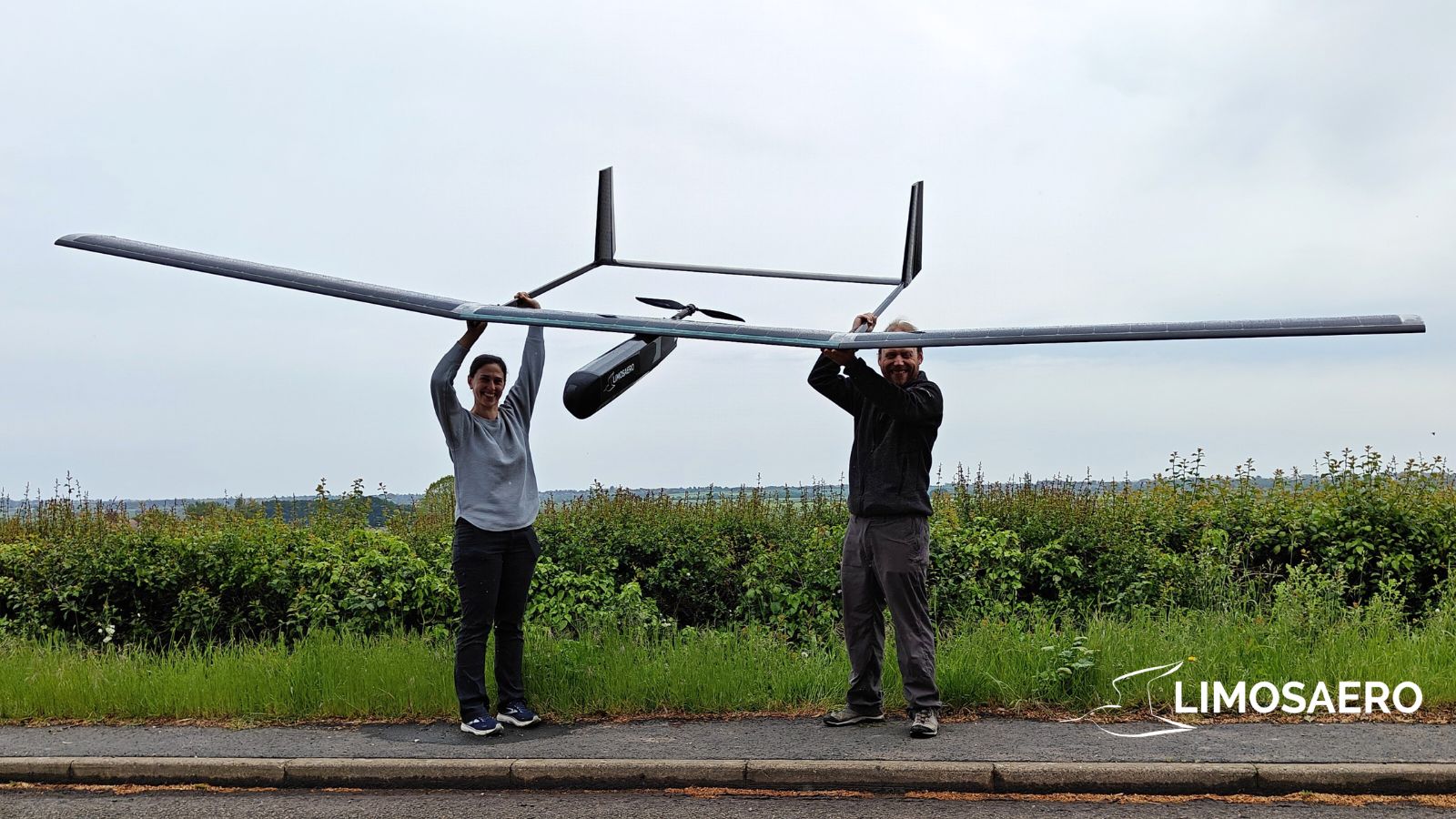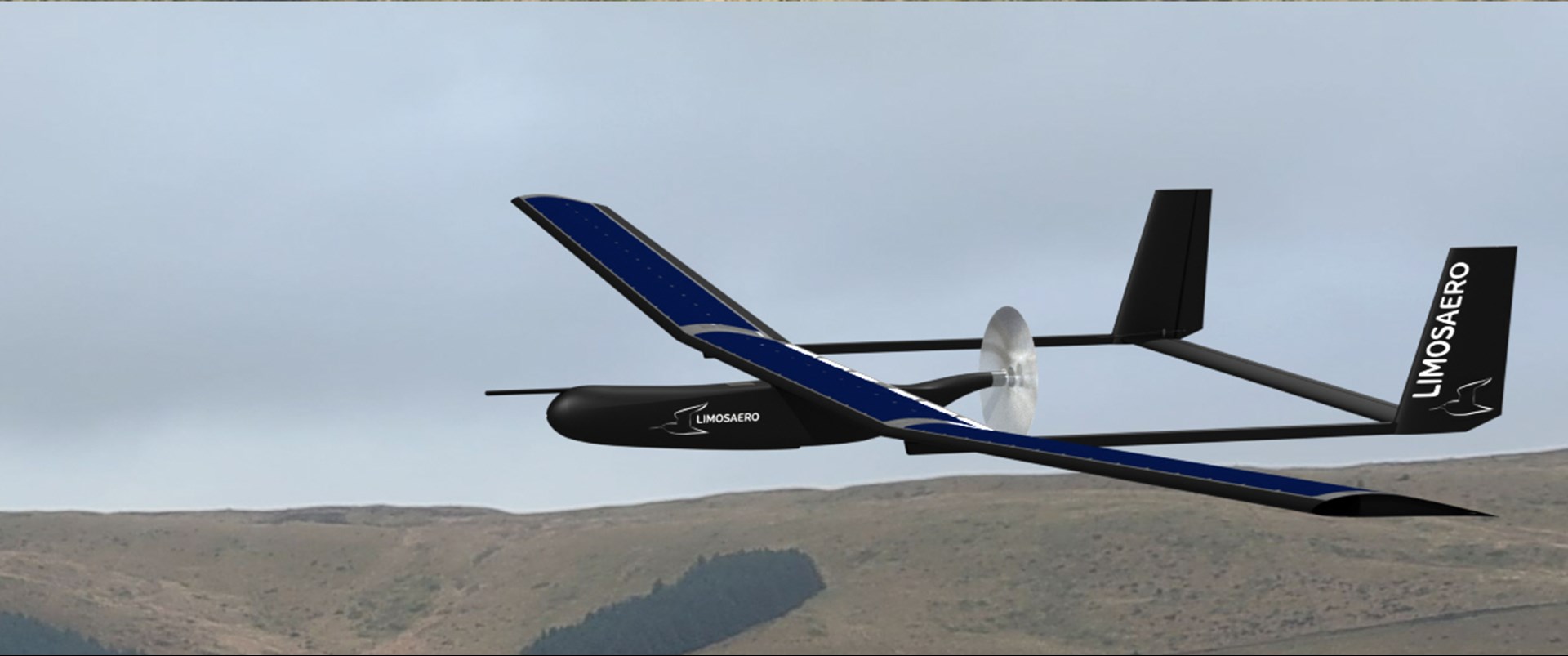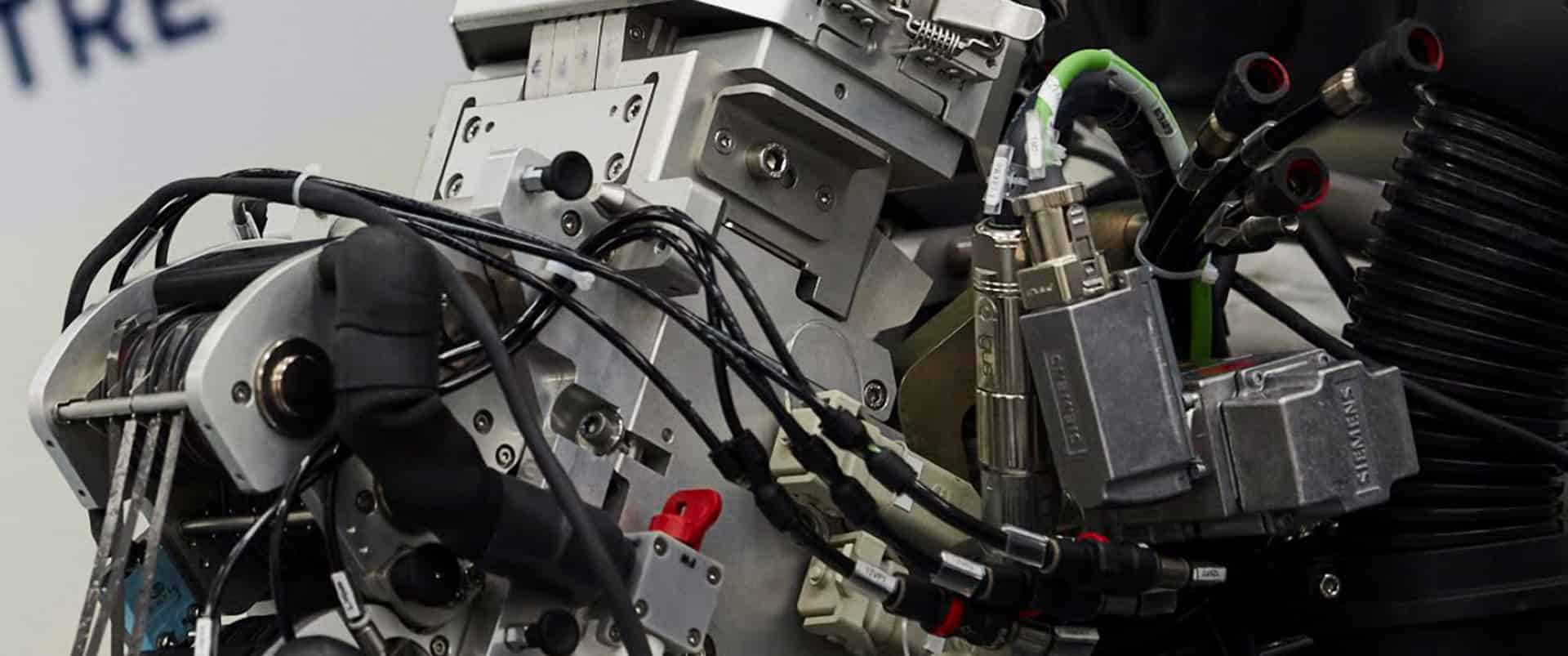14 June 2023
The National Composites Centre (NCC) worked with micro-company Limosaero Ltd, which provides innovative uncrewed aerial vehicle (UAV) and consultancy services, to develop a simplified, scaled-down demonstrator of their solar-powered, long-endurance, low-altitude UAV. The UAV has been designed to offer a low-cost, zero-emissions way to carry out atmospheric and earth-observation over marine and land environments.
Challenge
Existing low-altitude electric drones are constrained by battery life, limiting their range, endurance, and scope of use. High-altitude, solar-powered drones and satellites operate above the clouds, which can obscure observation data and cannot directly sense atmospheric gases and meteorology. Hydrocarbon powered long-endurance UAVs do not meet net-zero targets and their emissions make them unsuitable for some atmospheric sampling missions.
This is where Limosaero’s uniquely designed solar-powered UAV rises to the challenge. It offers a cost-effective way to unlock up to six-day endurance flights by collecting solar energy during the day and storing it in a battery that is used to keep the UAV airborne through the night. Limosaero’s offering includes mission uncertainty modelling algorithms to manage the challenge of variable weather impacting solar and UAV performance.
Innovation
To achieve long-endurance flight, mass is obviously key. Using a grant from the Innovate Edge UK programme, Limosaero chose to partner with the NCC’s SME team – NCC Connect - to build the critical lightweight carbon composite parts for the demonstrator UAV’s wing spar and wing ribs.
To take Limosaero’s on-paper design beyond the feasibility stage, the specialist NCC team worked closely with the company to manufacture the critical carbon-fibre components to the required strength and mass capabilities to achieve the weight objectives for the UAV, within the grant’s budget and time constraints.
The NCC’s experts worked on developing the manufacturing and prototyping processes required for the primary airframe structure, bringing Limosaero’s design to life and creating a prototype. The team led the SME through the best route to manufacture for the minimum viable product (MVP) demonstrator and advised on design and options for low-cost tooling and manufacturing of prototype parts.
Impact
Once deployed, the UAV will offer a range of cost-effective atmospheric and earth-observation applications in marine and land environments. These include gas sensing, meteorological data collection, wildfire detection, rare-earth exploration, and environmental surveys. The product also has the potential to directly offset CO2 by providing a zero-emission alternative to traditional fuel powered flights.
According to Hilary Costello, Co-founder of Limosaero Ltd:
"The support from the NCC’s SME team was excellent. They understood the challenges we faced as a small company and helped us overcome the hurdles to make composite parts within the time and budget constraints."
Adding to this, Graham Spelman, Co-founder for Limosaero Ltd said:
"The Innovate Edge UK programme was extremely helpful in supporting our work with the NCC to propel our company forwards."

Limosaero co-founders Hilary Costello and Graham Spelman with the completed solar-powered UAV demonstrator capable of unlocking up to six-day endurance flights.


